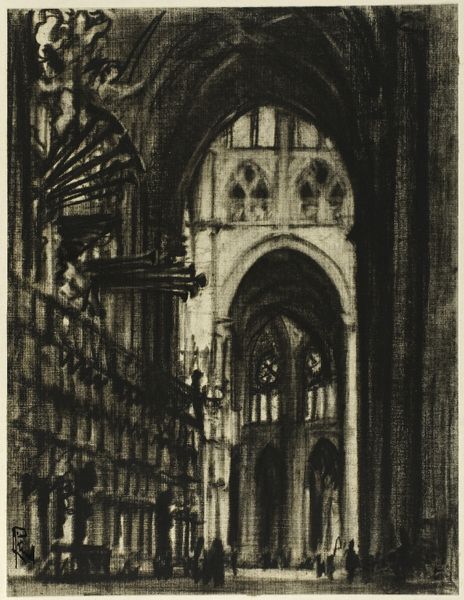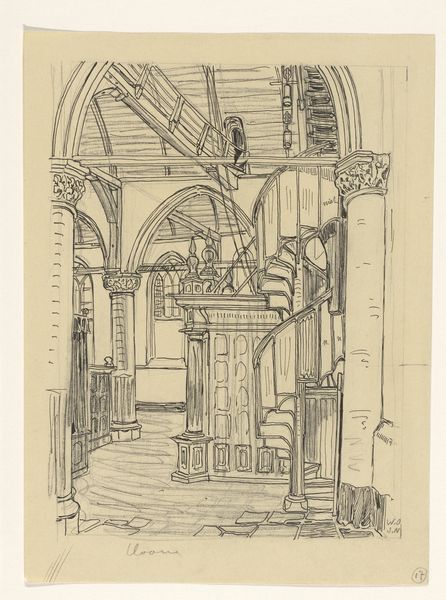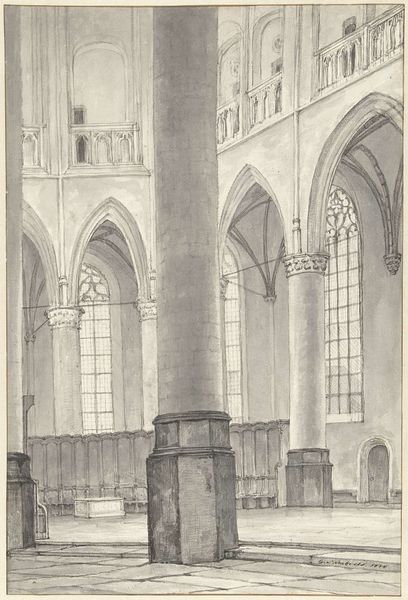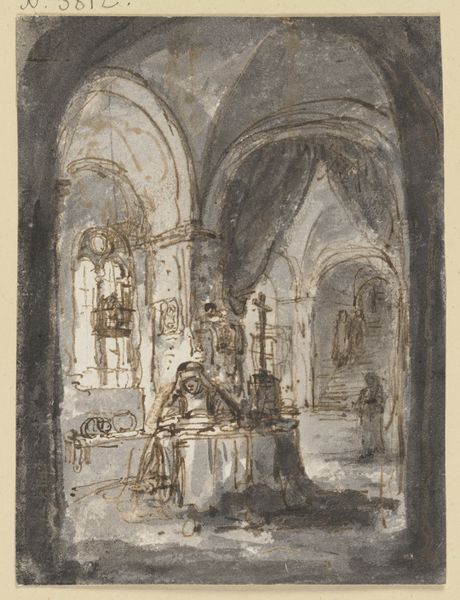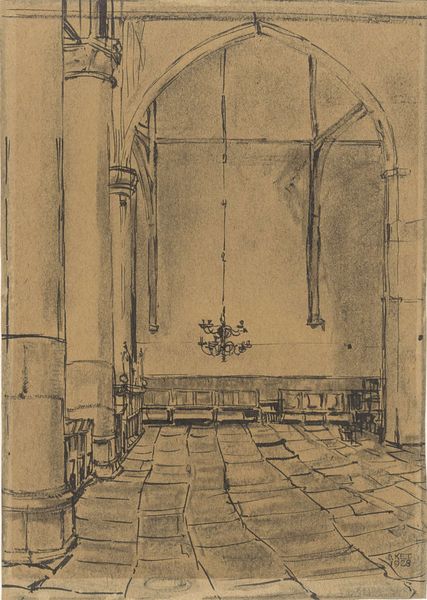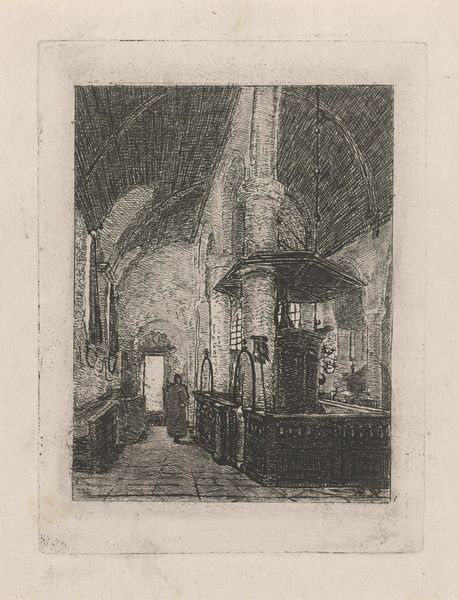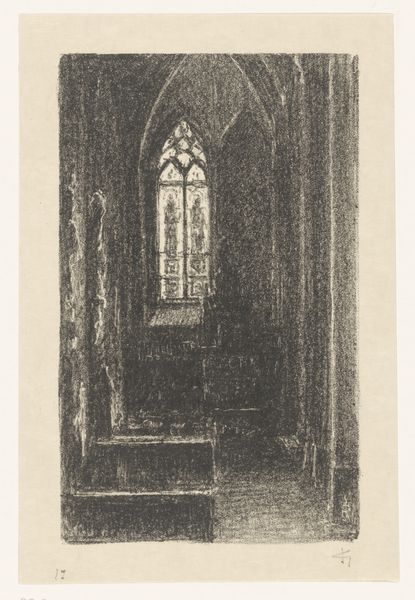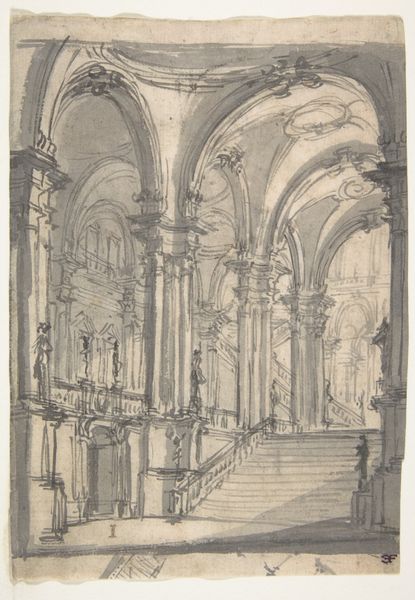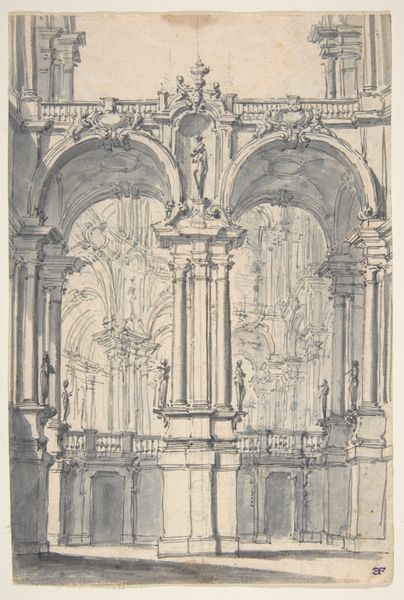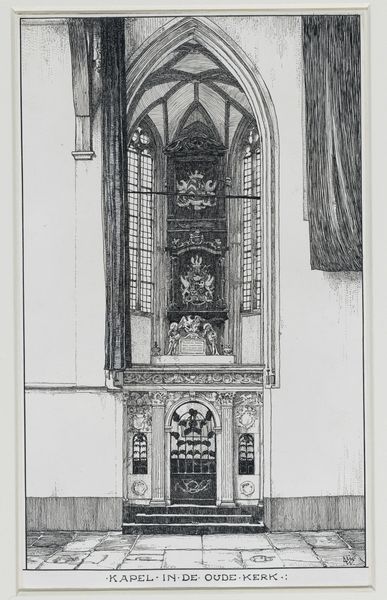
drawing, print, gouache, paper, charcoal
#
pencil drawn
#
drawing
#
amateur sketch
#
light pencil work
# print
#
gouache
#
pencil sketch
#
charcoal drawing
#
paper
#
charcoal art
#
unrealistic statue
#
pencil drawing
#
plant
#
pen-ink sketch
#
water
#
united-states
#
charcoal
#
pencil art
Dimensions: 283 × 217 mm
Copyright: Public Domain
Editor: Here we have Joseph Pennell’s "Santa Maria La Blanca, Toledo," around 1903. It's a charcoal and gouache print, and I’m struck by the way the light filters through the architecture. What can you tell us about it? Curator: What’s immediately apparent to me is the process. Consider the labor involved in producing the print; the artist’s hand mediating between the grand architecture of the synagogue-turned-church and the mass-produced image for wider consumption. Editor: So you see the making of the art as really important. Is it just the artist's labor, or are there other factors at play? Curator: Absolutely. Look at the material qualities: the paper, the charcoal, the gouache. These weren’t precious materials. Pennell chose them to create something reproducible, something accessible. The printing process itself allows for that distribution, democratizing art, taking it out of the exclusive realm of the wealthy patron. Think about who this work was made *for.* Editor: That's a side of art I don't usually consider - its consumer. Does the subject - the Santa Maria La Blanca - also play a part? Curator: Of course! This building, a former synagogue transformed into a church, is laden with complex socio-political meaning. Pennell, by reproducing it, inserts himself into that ongoing dialogue about religious power and appropriation. The act of drawing becomes an act of commentary. Editor: I guess focusing on materials and how it's made really changes how you understand the work. I might need to look at art with new eyes. Curator: Precisely! It allows us to see art as an active participant in social and historical processes, rather than simply a reflection of them. Understanding how things are made, by whom, and for whom reveals so much more.
Comments
No comments
Be the first to comment and join the conversation on the ultimate creative platform.
